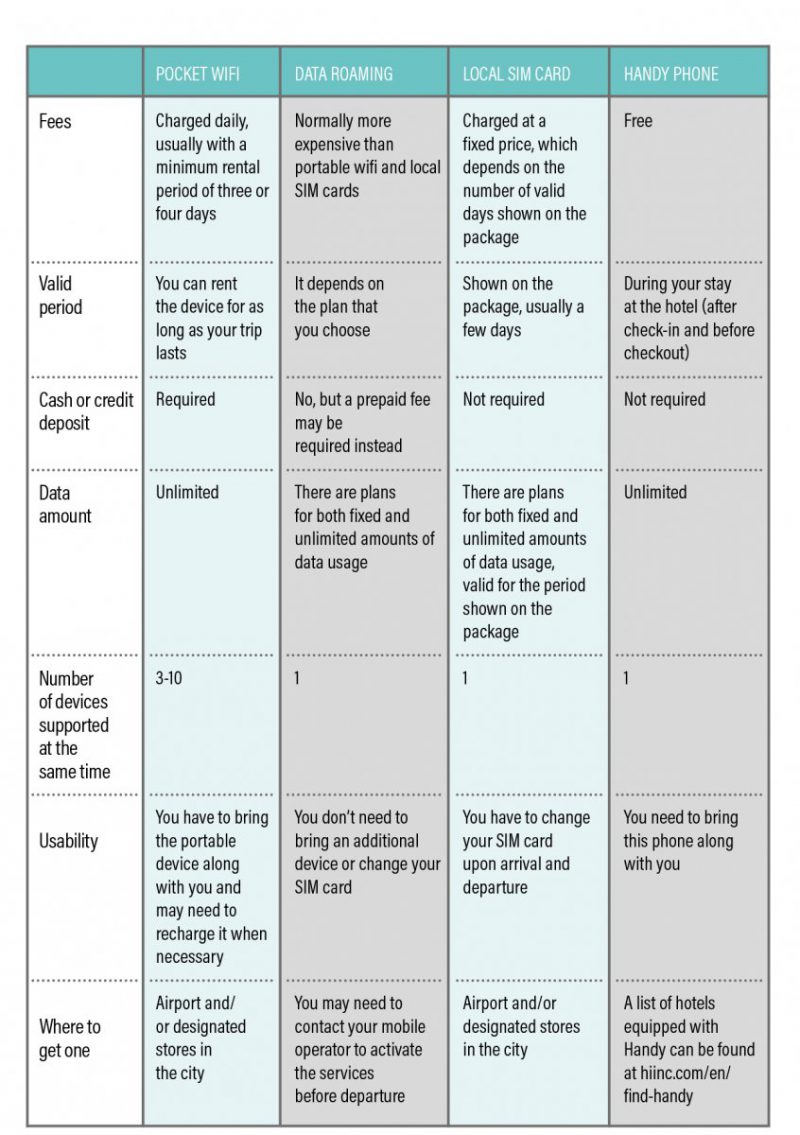Getting connected abroad
Here’s your guide through the most cost-effective ways to get data access on your international travels
June 1, 2019


For many travelers, the first priority upon arrival at their destination abroad is to get connected as soon as they can, especially when they need to deal with urgent e-mails and business calls. Today, although international phone calls can be made via many instant-messaging apps like WhatsApp, WeChat and Line, many travelers still need a stable, fast and economical local mobile network service. There are a few options providing local network connectivity, but they vary in terms of price and usage.
First, there is pocket WiFi, a small portable gadget that transforms 3G or 4G mobile networks into private WiFi signals. The handy device, also known as a “WiFi egg” due to its shape, allows its signal to be shared with multiple devices. There’s a one-off deposit and fees are charged daily, and there’s typically a minimum rental period of three or four days.
You will also need to go to the airport or designated stores in the city you’re visiting to pick up the device and return it afterwards; the alternative is to pay for an express delivery service to return it to the store. A deposit is charged at the same time.
A local SIM card is another option and easy to obtain at the airport upon arrival. You may be asked to present your passport, and expect to wait in line.
Before purchasing, you need to check if your mobile device is compatible with the local network system. Sometimes you may also need to deal with some network settings after installing the card, which may cause difficulties for the less tech-savvy. Alternatively, some travelers just activate their data roaming function when they travel abroad, but that usually incurs much higher fees.
Available in over 80 countries worldwide, the Handy, made by Hi Inc, is a smartphone provided as a complimentary amenity by some hotels for their guests. The device offers free and unlimited data usage as well as free local and international phone calls. The smartphone can also be used for in-room control, service requests and concierge assistance. City guides, digital maps and special offers are available as well. Data on the phone is wiped out automatically after checkout, ensuring user privacy. However, Handy phones can only be found in hotels that partner with the company, so make sure to check beforehand. Also, some have criticized the device for displaying unwanted ads.

For data roaming and overseas calls, fees can vary widely between in-country mobile operators. If you’re using a particularly large amount of data, the carrier may slow down your access speed if you exceed its fair usage policy.
Generally speaking, data roaming is usually more costly and is not recommended unless you have a pretty lenient expenses department. If you are traveling with several companions, it’s best to rent a pocket WiFi so that all the travelers can share not only the WiFi signal, but also the rental fees. (Although if you need to split up at any time for separate meetings, there will obviously be a problem.) For single travelers, a local SIM card is the most convenient solution, because you don’t need to pay a deposit or worry about returning it. A Handy phone definitely saves you extra time and money looking for other options, but you need to check in advance if the hotel you are going to stay at provides this smartphone – and you’ll have to put up with advertisements. Jackie Chen




